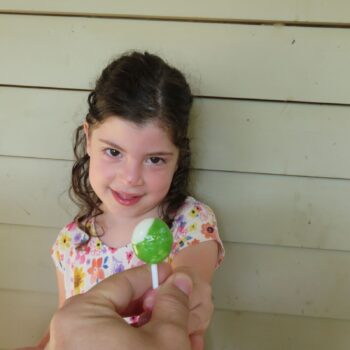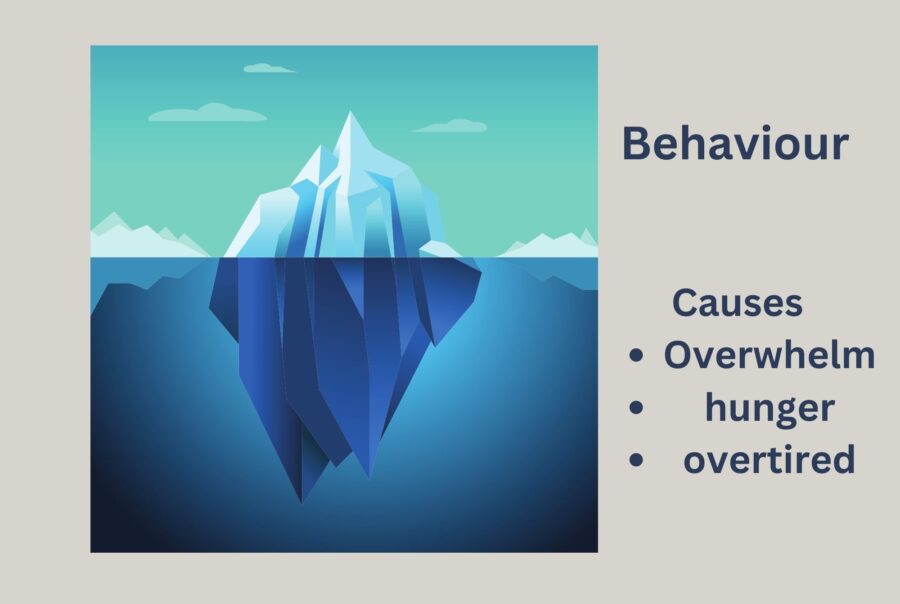Are our kid’s sleep challenges tied to how we handle their behaviour during the day?
Learn these 3 Behaviour Management Techniques to End Bedtime Battles
One of the biggest challenges parents of toddlers and preschoolers have is putting them to bed and having them stay there until the morning. Many of my clients confessed to me that they hated bedtime or they feared it more than anything. What I found out as a sleep consultant and mother of three very strong will kids is that the reason behind our children’s refusal to go to bed or stay there or ask for one more book or one more glass of water or suddenly wanting to go pee….again, is the way how we have been managing their behaviour.
I clearly remember the aha moment behind my daughter’s sudden awakings during the middle of the night and how I connected it to a behavioural cause. She was 2.5 years old at that time, and she got into the habit of waking up around 2 am and asking for milk. Now, the curious thing is that I realized that she would only do it when my husband was home ( he is out of town once or twice a week for work); she would never, ever do it with me. But if he was home, chances were she was right by his side, holding her zippy cup and asking him for milk.
One of the following mornings, my daughter had a tantrum. I remember clearly my husband carrying her, breaking and giving her what she wanted. And I predict it: “It’s going to backfire on you. She will wake up tonight and look for you”. And yes, you guessed it, the story repeated. It wasn’t until we were on the same page and set up some rules that those visits ended. So, in this case, it was not about fixing schedules, tiredness or overtiredness, etc; it was about discipline. Ugh, I hate that word! But as a parent, I had to accept that if I wanted to make my children listen to us, we would have to put some discipline around. But how do we make our children to listen?
Before entering into solutions, we should look at the most common tools we use to make our kids do what we need them to do.
Bribing
Let’s look at a typical scenario: Your child took every single toy out of their cabinet, and logically, you ask them to clean their toys. You came back to check on them; of course, they haven’t picked up anything. You start to feel frustrated and yell or bribe: ” If you clean up your toys, I’ll give you a treat. Who’s not guilty of doing this? I was all the time! It got me results until, well, it did not work anymore.
The truth is that bribing can get our kids to do the task, but over time the “treat quality” demands tends to increase. They will no longer respond to the treat, and you will have to give them something bigger or more appealing.

It becomes unsustainable and makes our kids lose sight of the value of the task and focus on the external reward instead. If, for example, your child doesn’t want to practice writing, and we promise a reward, he or she will do this for the reward and not realize the satisfaction of getting better at writing because they were practicing. Eventually, the child becomes more demotivated, increasing the chances of giving up. In the end, bribing results in entitlement. When you ask your kid to do something, they will expect you to give them something too.
Threats
Threats might stop unwanted behaviour for a while, but it fosters rebellion and fear in the long term. It actually sends the wrong message; we are telling our children, ” I am bigger than you, and I can make you do it”. Threats don’t really tell them why they should behave; they make our children feel less safe, dependent on fear to get motivated and resentful.
Making false promises
We are all guilty of this one. Despite our best efforts to put into practice our best parental skills, we all have made false promises at least once. Well, this is actually worse than threats;
a false promise causes disappointment, and in the end, our children will stop listening because they know that whatever we are promising is not happening. If you promise your kid that you will take him to the park after he finishes his dinner, and he does, but you don’t follow through because it is too late, he will feel disappointed you risk a tantrum right before bed or send the message that a promise doesn’t have any value. In the same way, If your kid is having a tantrum in the middle of the island at the grocery store and we tell them, “If you don’t stop, I will leave you here,” when we well know we will never do that, and he knows that, he will probably yell even louder.
Giving in or giving up
When I decided to stop feedings at night or remove baby bottles for good, I had to mentally prepare myself. Because once a rule is established, there is no way back. Why? Because it brings unnecessary tears. Saying no to something to later give in after 20 minutes of crying or whining only teach our kids that whining or crying works! And even worse is the feeling that we make them cry for nothing at the end. Toddlers and preschoolers are natural boundaries pushers; this is their natural way to explore their independence, and we should always encourage curiosity within a safe environment, but they also have to learn limits and the word “no” means no. In a perfect world, all caregivers will be on the same page, but that’s not always possible; still, if your child gets to have ice cream before dinner at grandma’s house, you could always say: ” I wish you wait for dinner first when you are at grandma’s, but in this house, we have ice cream after dinner”.
Punishing
Growing up, I don’t remember I have ever been punished. How did my parents did it! They didn’t have to; the limits were very clear. No wiggly room!
A lot of us implement time-out (TO) or other types of punishment when kids go out of control or are not listening. And even though TO is recommended by the American Academy of Pediatrics (AAP) as a behaviour management strategy, most parents do not apply the suggested parameters and report that it really doesn’t work (Carla Kemp, Senior Editor, 2017). And plenty of research suggests that punishment, especially physical punishment, creates more negative behaviour and has shown no evidence that it is beneficial to children (Heilmann et al., 2021). Over time, kids become more skilled at eluding the negative result. So if a kid who misbehaves knows he will be punished if caught, he might become better at lying to avoid punishment.
Understanding the root of misbehaviour

Now that we know about the tools we have been using and their little results, it is worth finding out what is behind our children’s behaviour. Behaviour is often just the tip of the iceberg; underneath lay a whole bunch of causes that arise from not meeting some basic psychological needs. We all, grown-ups and little ones, have more chances to self-motivate when these basic needs are met. For example, a person working for a company might get the job done so he or she gets paid, but another person who feels that his or her work is recognized and valued and feels connected to the company will feel self-motivated to go the extra mile even when not explicitly required. We want to promote self-motivation in our children so that with time, they learn to listen, not because if they don’t, they will get in trouble or won’t get the reward but because they become better at making choices and seeing the bigger picture.
So basically, there are three basic needs our children strive for:
|
CONNECTION |
COMPETENCE |
AUTONOMY |
But how?
Connection
Our kids are more willing to listen when they feel they can connect with you. Often when we don’t acknowledge them for long periods of time, they start to whine or misbehave, probably as an attempt to get our attention. They would get a negative response but a response nevertheless. Try this instead:
- Praise the ordinary calm moments, too: For example, your daughter doesn’t nap anymore, so you implemented quiet time, and she has been playing nicely by herself for a period of time, let her know that you noticed it and show interest in what she’s been working on.
- If your kid shows you a drawing that he made at school, you could say, “Wow, it looks like you worked really hard on this”, instead of “It is very nice”, or ” It is beautiful”.
- Empathize with your child, acknowledge his emotions, make eye contact and let him know that you are listening. Try using phrases like ” I’m listening to you” and ” I understand you”, or repeat your child’s words back to him; for example, your toddler is crying because you said it is bedtime and he was busy playing with his lego: ” I don’t want to go bed, I want to keep playing!”, you say: ” I understand you, you wanted to keep playing with your lego and that’s why you are crying”.
Competence
Our kids are internally motivated to explore the world. They are eager to learn, grow and try things for themselves. Toddlers and young kids are still learning to self-regulate, and they wear their hearts on their sleeves; for them, everything is a big deal. At this age, children also have no spatial/time awareness. Create competence by promoting a learning environment where mistakes are welcome. During my ballet lessons, my ballet teacher always says, “This is the place to get it wrong, not at stage”. So next time your child tries to do something for himself, let him! Unless it is dangerous, when we do things for them, we are transmitting the message that they are not capable. Try these things instead:
- If your child is in “I want to do it by myself” mode, let him do it. For example, if he wants to pour himself a glass of milk, but you fear the mess ahead and can’t handle it, get him a small bottle, fill it with milk and keep it in the fridge; tell him that is his and let it try it.
- If your child struggles with getting dressed promptly in the morning, or brushing his teeth before bed, use routine visuals! Posting pictures of what you want them to do help make things less abstract. So instead of saying, “Go get ready,” try saying, “Go see on the wall what is next”.
- If your child gets extremely upset if you buckle him up in the car, get him some buckles from old backpacks and let him practise at home; with time, he will become better and faster at it.
- If your child has difficulty transitioning between activities, try using cues like ” In 5 minutes, it will be time to go to bed”, followed by ” 2 more minutes for bedtime, start tidying up”.
- Create consistency and predictability. Kids love predictability. Have you noticed how good kids at daycare are at following directions? That is because every day, they follow the exact same routine. Lunch at 11.30 am, wash hands at 11.50 am, diaper change and nap time at 12 pm. They might not be aware of time, but they are aware that each event follows the next one. When things are predictable, they are less chances of whining and crying. So start implementing rules like tidying up before dinner, lights off after storytime, or last call for the bathroom before going to bed and keep it consistent.
Autonomy
The toddler and preschool years are notoriously known for a need for independence. Letting our children know that they have control over themselves and the choices they make helps them make a connection between how their choices and actions influence outcomes. It promotes a sense of self, a feeling of control, and the satisfaction of doing things by themselves, which boosts their self-esteem and cognitive growth. When we don’t let them have autonomy, they are more likely to say “no”; when we do, they are more likely to get motivated and cooperate. Promoting autonomy doesn’t mean that they get to make all the calls; it means that we set up the limits, and they make choices within those limits. Try this:
- Offer choices: Your child cannot decide how many books he wants you to read for bedtime, but you can give them choices: “Out of these five books, pick 2 books for tonight”, or which one do you want to read first? This one? Or this one?”
- Listening to their opinions and ideas, discuss them together.
- Give them responsibilities that give them a sense of accomplishment; for example, let them carry a small grocery bag to the car, put them in charge of watering the outdoor plants or feeding the dog; remember to remark his efforts.
Tantrums
Dealing with tantrums is not fun; we have already learned that kids this age are unable to autoregulate. Imagine you take your child to the splash park for the first time; he is excited, splashing water with his feet, and you haven’t realized that he is standing right under that big bucket of water that turns down when it is full. He gets soaked and shocked despite your efforts to run to his rescue. He immediately runs to get out of there.
That big bucket of water falling on your child is very similar to what happens when your child is emotionally upset. The brain has three parts: primitive, emotional, and logical. When a child is upset, the primitive part is fully loaded; it is ready to run or fight, but it cannot process the events that just happened.

What not to do
Knowing that our children cannot think logically while they are at the peak of their emotions gives us some ideas about what not to do while they are in this state. Let’s put ourselves in our kid’s shoes and pretend that the same thing happened to us: the bucket of water empties, and you were going to run, but your friend stopped you and said: ” you should have seen that there’s water coming out of that bucket!” but you are not interested in staying to listen to advice, your primitive brain is activated and wants to run. Often, when our kids are in a burst of their emotions, we offer solutions or advice, but our kids are not ready to take on this advice, and that’s why they cannot calm down. Now let’s imagine that your friend tells you: “You just got soaked; it is not a big deal.” Perhaps it was a big deal to you; perhaps you did not have extra clothes and had to stop at the grocery store before heading back home. In the same way, minimizing our children’s emotions when their primitive brain is in control and everything feels like a big deal might make them feel like we cannot connect or empathize with them and hurt the bond we have formed with them.
What to do:
If you have dealt with a fair amount of tantrums, you can recognize three phases: the primitive brain phase, the cool-down phase, and the logical brain phase.
During the primitive brain, phase is best to not do all of the previous mistakes mentioned or teach any lesson. Teaching and telling consequences takes time to process, and for that, we need the logical brain to be activated. So what do we do? We give them time! This is the best moment to empathize with your child and build a deep bond.
The cool-down phase, which length varies from child to child depending on their personality, is the transitional period before the logical brain takes over.
The logical brain phase is the time when our children are done crying and are more open to listening. This is when we can start a bit of teaching and talking about consequences or expectations while validating their feelings. Help them label their feelings and understand how they are feeling. Labelling feelings helps our brains to process and overcome those feelings better. If you haven’t yet, you can read more about labelling and processing feelings to manage behaviour here.
| Tantrum |
Phase 1: Primitive Brain |
Phase 2: Cool-down period |
Phase 3: Calm and rational brain |
|
DON’T |
|
|
|
|
DO |
|
|
|
So how do we discipline, then?
The first approach I like to suggest is CONSISTENCY. Children love routines and have a better day when they know what is coming. This is the reason why infants, toddlers and preschoolers do so well in daycares. Daycares time each activity and keep it in the same order day after day. Having a routine during the day facilitates transitions and decreases meltdowns. So if you have outdoor activity from, say 10: 30 a.m. to 11:15 a.m., come home, put shoes away, wash your hands and sit at the table for lunch at 11.30 a.m., followed by putting food away, washing hands again, diaper change and nap, in the same order every day, chances are that your child won’t resist any step of their routine.
The second approach is, like I said before, CONNECTION. You want your child to know that you listen to him. Always talk to them directly, not from one room to the other. Use simple sentences and ask: “What did I just say?” that way, you will know that they did hear you, and they will take accountability. Connection is also EMPATHIZE with your child. Putting yourself in their shoes and understanding their perspective can help you communicate with them better. Repeat his words. For instance, if your child is throwing a tantrum because they don’t want to leave the playground, acknowledge it. Follow the steps for handling tantrums and repeat his words: “You don’t want to leave yet”. Make a pause and then repeat the rule: “ After outdoor playing, we go home and have lunch. We will come back after your nap or tomorrow.”
The third approach has to do with AUTONOMY. As we start to make decisions for them, it is important to offer them opportunities to develop their autonomy. Offer choices but set boundaries. For example, “ Out of these two pairs of pyjamas, which one do you want to wear? Or “Out of this pile of books, choose two books for reading before bed”. And remind your child that bedtime is at 7.30 pm, so if they take too long to choose, they won’t have enough time for those two books.
This brings me to the last approach: introducing natural consequences. As your day goes on, choose a few safe situations where you allow your child to experience the consequences of their acts. For example, it is a cold day, you are getting ready to go outside, and your child refuses to put their mittens on. Let them go outside, stay close enough to be able to come back home, let them recognize that they are cold and then come back and have them put their mittens on by themselves.
To wrap it up, what about bedtime challenges?
Oh yes, so bedtime challenges. Now that we have covered the theory, we are at the right spot to start sleep training our toddlers or older kids. It might come or not as a surprise to you, but the behaviour that our kids exhibit during the night is the same behaviour that they exhibit during the day. So when my daughter asked Dad for a cup of milk at 2 am, she thought it was ok to ask Dad anything even when it was not the time because she knew Dad would always say yes. Perhaps she woke up and really wanted daddy, but there is plenty of time during the day to promote bonding and quality time other than in the middle of the night. It is not until we clean up a bit the discipline department that we can see successful results during sleep training.
Likely when working with clients that have toddlers or older kids, I come with a whole artillery of positive parenting so we can see progress faster and with less protest. In the end, children leave happy with their certificate of independent sleepers or ” successfully sleep on my own bed,” and parents not only have better parenting tools but also have their nights back. Win-win for everyone!
Ready to book? All it takes is a free 15 min assessment call. Call now
The road ahead has wonderful things in store for you
Night Night

References
Carla Kemp, Senior Editor. (2017, January 24). Many parents use time-outs incorrectly. American Academy of Pediatrics. https://publications.aap.org/aapnews/news/11861/Many-parents-use-time-outs-
Heilmann, A., Mehay, A., Watt, R. G., Kelly, Y., Durrant, J. E., & Gershoff, E. T. (2021). Physical punishment and child outcomes: A narrative review of prospective studies. Lancet (London, England), 398(10297), 355. https://doi.org/10.1016/S0140-6736(21)00582-1


